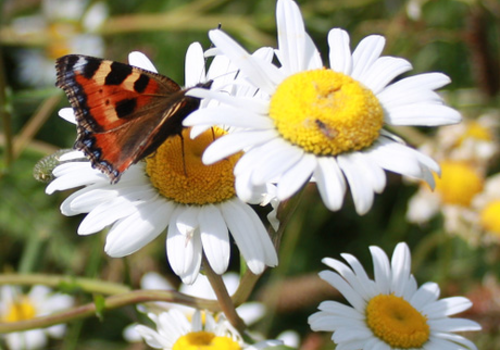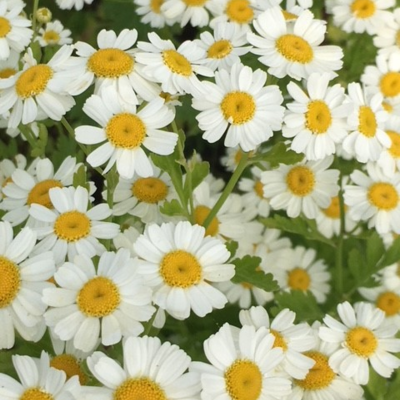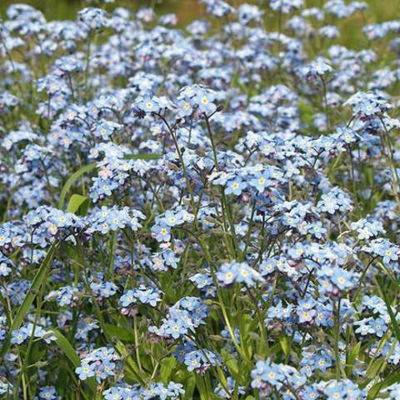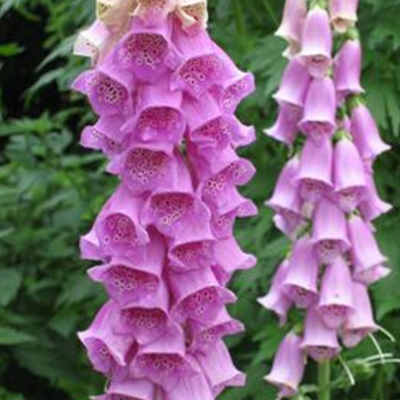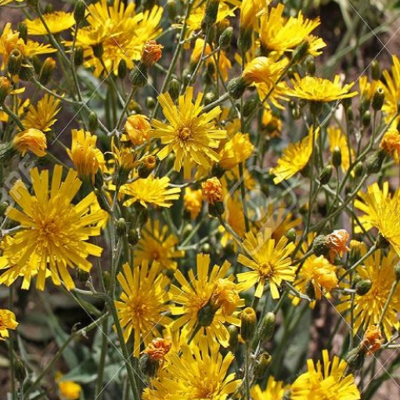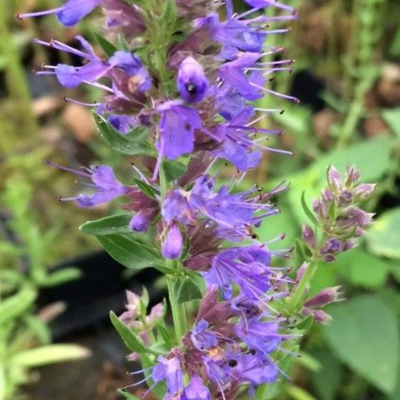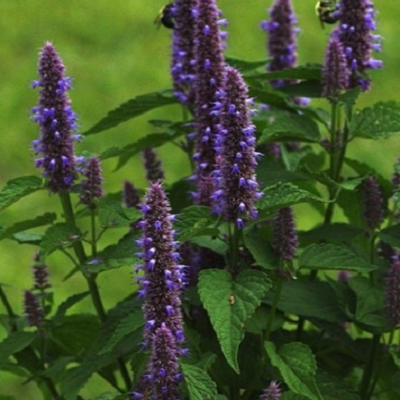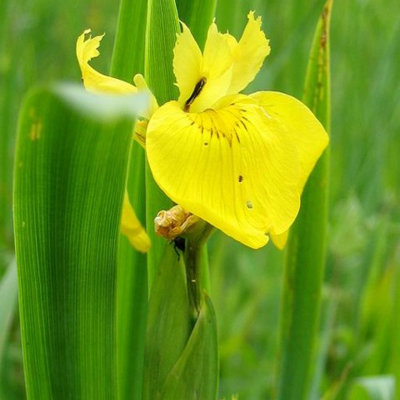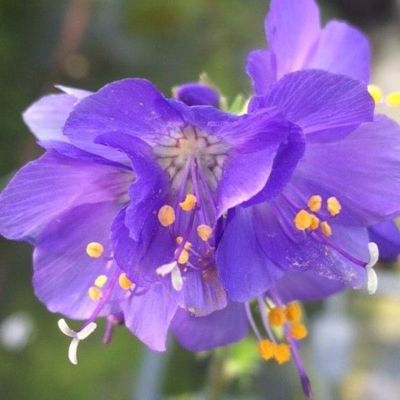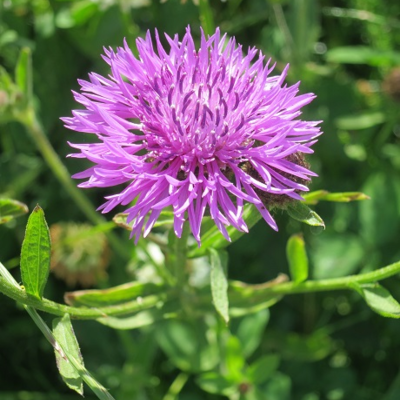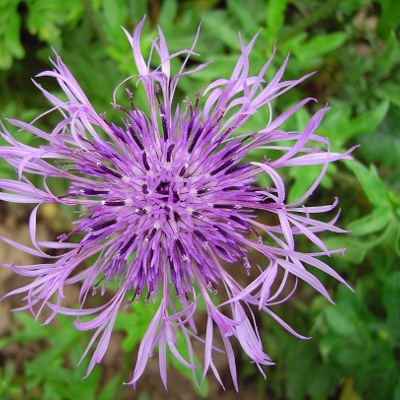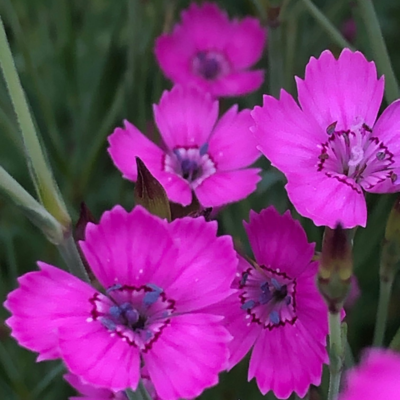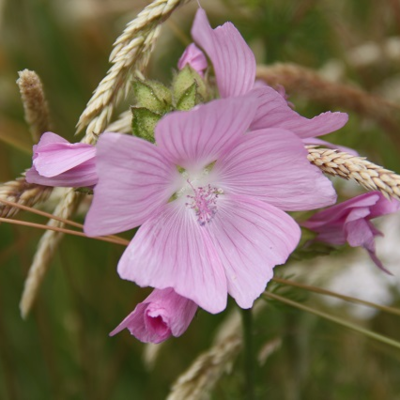Wildflower Plants A to Z
Choose from our entire range of over 100 wildflower plug plants, expertly grown in our very own nursery from high quality, UK native wildflower seed. Our wildflower plugs are ready to be planted straight out into your garden or meadow as soon as they arrive, all year round. Buying individual wildflower plants is one of the best ways to establish your chosen wildflower species, planted individually or as part of a more diverse meadow created from our range of wildflower seeds.
Don't hesitate to get in touch to speak to one of our experts or request a catalogue to view our full range. Ordering regularly or looking for large volumes? Click here to apply for a trade account today - we review all applications within one working day.
Here’s a real treat for you: the Feverfew is a small, bushy plant which grows daisy-like flower heads. Its small-but-dense size makes it a perfect potted plant, and though it likes being under the weather in plentiful sunlight, one may try to raise it indoors to best appreciate its strong scent. Highly valued for medicinal uses.
- Type: Perennial
- Height: 15–45cm.
- Flowers: July-September
- Soil Requirement: Well-drained
- Light Requirement: Full sun
- Natural Habitat: Waste lands
- Also known as: Featherfew, Pale Maids
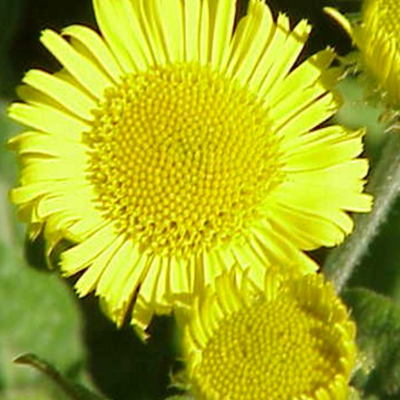

Plants for Pollinators highlights plants selected by the RHS as scientifically proven to tackle the declines in bees, butterflies and other pollinators.
If you're itching for a good pond-side plant, this may be what you need: these branches of bold yellow, daisy-like florets with ray-like petals are the most effective way to place some sunshine in a shady spot, but also has use in repelling invasive insects with its unique scent.
- Type: Perennial
- Height: 30-60cm.
- Flowers: July-September
- Soil Requirement: Moist
- Light Requirement: Full sun or partial shade
- Natural Habitat: Riversides, marshes, ditches
- Also known as: Harvest Flower, Job’s Tears, Pig-Daisy
There is something strangely unforgettable about this flower’s simple-but-unique tiny, baby-blue blooms with rare bursts of pink, and silvery foliage. They’re also perfect for pollinators and have a knack for self-seeding.
- Type: Annual
- Height: 7-25cm.
- Flowers: April-October
- Best Sown: Autumn
- Soil Requirement: Well-drained
- Light Requirement: Full sun
- Natural Habitat: Road-sides, dry grasslands
- Also known as: Blue Mouse-Ear, Scorpion Grass
This item is currently unavailable
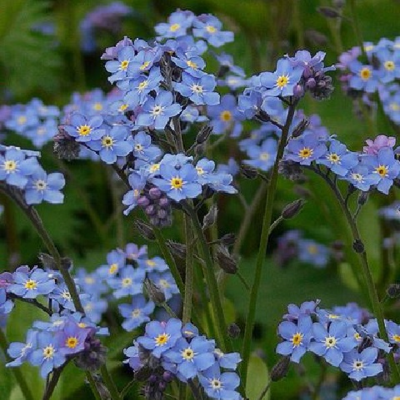

Plants for Pollinators highlights plants selected by the RHS as scientifically proven to tackle the declines in bees, butterflies and other pollinators.
These showy azure blue flowers consist of 5 petals with either a white or an orangery/yellow star shaped centre. An excellent plant for pollinators, for their nectar and pollen.
- Type: Perennial
- Height: 15-30cm.
- Flowers: April-July
- Soil Requirement: Moist, well drained soils
- Light Requirement: Semi shade
- Natural Habitat: Woodland, wet woods, hedgerows
- Also known as: Garden Forget-Me-Not
This item is currently unavailable
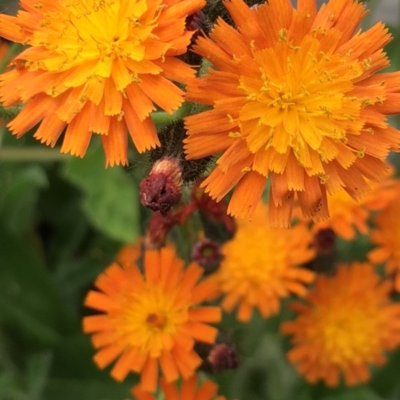

Plants for Pollinators highlights plants selected by the RHS as scientifically proven to tackle the declines in bees, butterflies and other pollinators.
Now here's a foxy flower- literally! Bearing fuzzy-looking, monarch orange flowers with brush-like edges, with stems covered in black hairs, it's easy to compare this low-maintenance wildflower to a fox leaving its den- and the clusters of new flowers which open beneath it to its shy, newborn litter of cubs!
- Type: Perennial
- Height: 15-30cm
- Flowers: June-September
- Soil requirement: Well-drained
- Light requirement: Full sun or partial shade
- Natural habitat: Meadows, embankments, road verges, stony wasteland
- Also known as: Devil's Paintbrush, Golden Mouse Ear, Grim-the-Collier
This item is currently unavailable

Plants for Pollinators highlights plants selected by the RHS as scientifically proven to tackle the declines in bees, butterflies and other pollinators.
Few flowers match the fairy-tale flair of the foxglove: its towering stems of majestic magenta bells feature heavily across myths as a source of healing and protective magic, and a favourite of fairies- we can’t confirm if that’s true, but they are a favourite of bees and butterflies! Best grown in the back of a border to frame other flowers. Make sure to handle with gloves.
- Type: Biennial
- Height: 60–150cm.
- Flowers: June-September
- Soil Requirement: Well-drained
- Light Requirement: Full sun or partial shade
- Natural Habitat: Forest borders, footpaths
- Also known as: Dragon’s Mouth, Fairy Bells, Thimble Flower
This item is currently unavailable
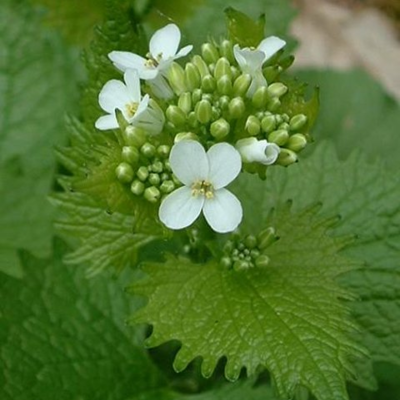

Plants for Pollinators highlights plants selected by the RHS as scientifically proven to tackle the declines in bees, butterflies and other pollinators.
Produces pearl white, four-petalled flowers and distinctly toothy heart-shaped leaves which provide the plant its name, as they smell like garlic when crushed. Its leaves are good for culinary usage, but its flowers make an excellent dressing for the garden, with their star-like petals sprinked beneath a bush creating a delectable display.
- Type: Biennial
- Height: 30-80cm.
- Flowers: April-July
- Soil Requirement: Well-Drained
- Light Requirement: Full or partial shade
- Natural Habitat: Woodlands, hedgerows
- Also known as: Jack-By-The-Hedge, Hedge Garlic
This item is currently unavailable
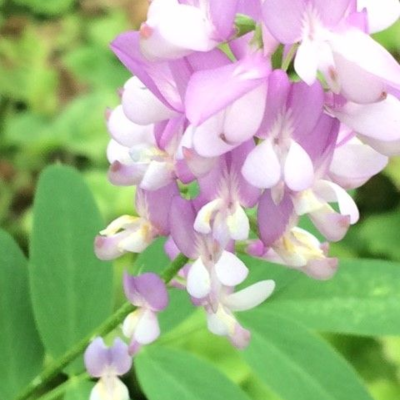

Plants for Pollinators highlights plants selected by the RHS as scientifically proven to tackle the declines in bees, butterflies and other pollinators.
Goat's Rue is a medium to tall plant with lilac-to-lavender petals in the shape of small sweetpeas. While it was previously grown readily as forage and medicinal crop, it's nowadays seen as an excellent ornamental plant that is attractive to a variety of insects as a food source.
- Type: Perennial
- Height: 100-150cm.
- Flowers: July to September
- Soil requirement: Moist but well-drained
- Light requirement: Full sun or partial shade
- Natural habitat: Damp meadows, river banks
- Also known as: French Lilac, Professor-Weed, Italian Finch
This item is currently unavailable
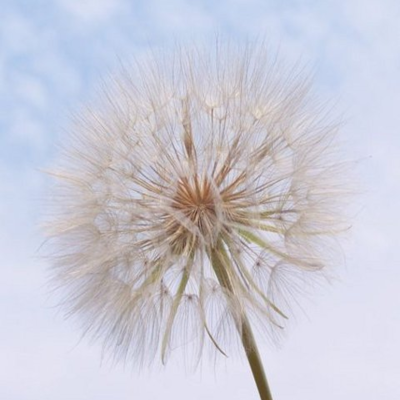

Plants for Pollinators highlights plants selected by the RHS as scientifically proven to tackle the declines in bees, butterflies and other pollinators.
Haven’t you herd? These buttery-yellow blooms framed by sharp green phyllaries have a lot in common with the famous dandelion, up to its famously fluffy, shiny sandy-silver seed heads later in the season for which they’re named. However, this hardy herb is a lot more showoffish, growing fairly tall in just about any environment. An early bloomer that closes later in the day, but when it blooms, it truly is outstanding in its field!
- Type: Perennial
- Height: 30–90cm.
- Flowers: May-July
- Soil Requirement: Moist or well-drained
- Light Requirement: Full sun or partial shade
- Natural Habitat: Grasslands, meadows, roadsides
- Also known as: Clock Flower, Johnny-Go-To-Bed-At-Noon, Salsifex
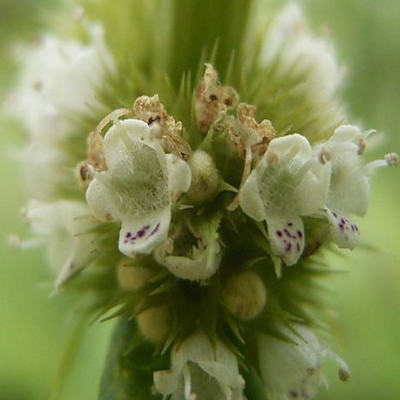

Plants for Pollinators highlights plants selected by the RHS as scientifically proven to tackle the declines in bees, butterflies and other pollinators.
Growing tall with distinct, spear shaped and toothy leaves, this whimsical wetland plant has a softer side in its clustered stems of miniature ivory petals, scarlet-spotted lower lips. An excellent plant for pollinators, and makes for a pretty pondside palette!
- Type: Perennial
- Height: 50-100cm.
- Flowers: July-September
- Soil Requirement: Moist
- Light Requirement: Full sun or partial shade
- Natural Habitat: River banks, stream sides
- Also known as: Bugleweed
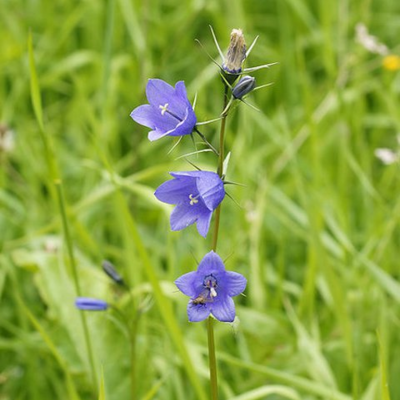

Plants for Pollinators highlights plants selected by the RHS as scientifically proven to tackle the declines in bees, butterflies and other pollinators.
Though dainty by appearance, these papery bells of blue beauty on slender stalks are actually remarkably resilient to the elements, and thus we recommend that you let this well-loved wildflower run through rockeries, and avoid overcrowding them.
- Type: Perennial
- Height: 15-45cm.
- Flowers: June-September
- Soil Requirement: Well-drained, sandy
- Light Requirement: Full sun
- Natural Habitat: Hillsides, coastal areas,
- Also known as: Cuckoo Shoe, Heath Bells, Scottish Bluebell
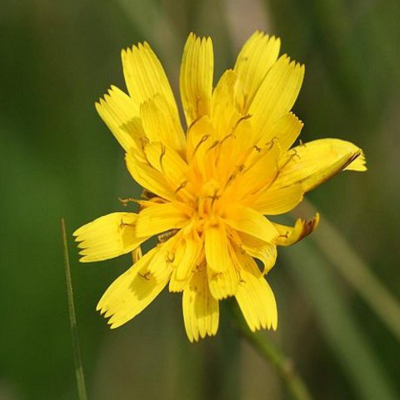

Plants for Pollinators highlights plants selected by the RHS as scientifically proven to tackle the declines in bees, butterflies and other pollinators.
In the autumnal gloom, spread some extra sunshine in a marshy environment with these dandelion-like rosettes of glinting gold. Not only is the Autumn Hawkbit long-lived, robust and especially attractive to pollinators, its seeds are also attractive to finches!
- Type: Perennial
- Height: 15-50cm.
- Flowers: July-September
- Soil Requirement: Moist
- Light Requirement: Full sun or partial shade
- Natural Habitat: Grasslands, rocky ridges, pathways.
- Also known as: Fall Dandelion
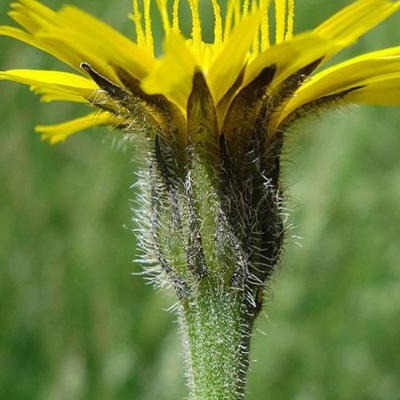

Plants for Pollinators highlights plants selected by the RHS as scientifically proven to tackle the declines in bees, butterflies and other pollinators.
Though this warm-paletted wildflower's plumes of canary-yellow petals look like that of dandelion, one can tell the Rough Hawkbit apart by their larger heads with shades of red and orange on the outer florets, as well as a pleasing fragrance which helps to bring bees and butterflies to your garden.
- Type: Perennial
- Height: 15-50cm.
- Flowers: June-October
- Soil Requirement: Well-drained, sandy
- Light Requirement: Full sun
- Natural Habitat: Grasslands, rocky ridges, pathways.
- Also known as: Greater Hawkbit
Likely named for its attractive foliage - forming in dense rosettes of mottles maroon leaves - one shouldn’t overlook its brilliant branching stems of yellow, daisy-like blooms, which helps to bring in the pollinators. An excellent ornamental flower which grows well in rockeries, meadows or mixed pots and baskets.
- Type: Perennial
- Height: 15-45cm.
- Flowers: June-September
- Soil Requirement: Well-drained
- Light Requirement: Full sun
- Natural Habitat: Grasslands, quarries
- Also known as: Leopard
Hyssop is a herb related to the mint, with aromatic leaves which are sometimes used for flavouring and medicine. It looks just as sweet, producing spikes of petals from vivid violet to royal blue and even white. A delightful bit of eye candy that's also attractive to pollinators and easy to grow.
- Type: Perennial
- Height: 40-60cm.
- Flowers: July-September
- Soil requirement: Moist or well-drained
- Light requirement: Full sun or partial shade
- Natural habitat: Grassland, meadows, roadsides
What’s better than the Anise Hyssop’s clumps-forming, soft spikes of mauve flowers? Perhaps only its aromatic leaves! A nectar-rich scented sensation of a herb best placed at the back of a border, where it brings in bees and butterflies.
- Type: Perennial
- Height: 60-100cm.
- Flowers: June-September
- Soil Requirement: Well-drained
- Light Requirement: Full sun or partial shade
- Natural Habitat: Dry forests, praries
- Also known as: Fragrant Giant Hyssop, Lavender Giant Hyssop
This item is currently unavailable
The Yellow Flag Iris is thought by some to be the original fleur-de-lis, a symbol of heraldry and royalty. And while the golden, three-petalled flowers and blade-like leaves are regal indeed, its true name is just as appropriate, as this water-resistant plant grows on tall, branching stems which display its beautiful blooms like flags waving in the wind. Recommended as a pond-side plant.
- Type: Perennial
- Height: 100-150cm.
- Flowers: May-August
- Soil Requirement: Moist
- Light Requirement: Full sun or partial shade
- Natural Habitat: Marsh, flood planes, ditches
- Also known as: Flagon, Water Flag, Yellow Fleur-De-Lis
This item is currently unavailable
The county flower of Derbyshire. Jacob's Ladder gets its name from its climbing, ladder-like foliage. Produces lavender blue, bell-shaped flowers form in clusters at the top of its tall, slender stems.
- Type: Perennial
- Height: 50-100cm
- Flowers: June - July
- Soil requirement: Moist but well-drained
- Light requirement: Full sun or partial shade
- Natural habitat: North facing areas, limestone hillsides, old meadows
- Also known as: American Great Valerian, Charity, Ladder to Heaven

Plants for Pollinators highlights plants selected by the RHS as scientifically proven to tackle the declines in bees, butterflies and other pollinators.
These thistle-like florets of magenta atop maroon flower heads are an excellent pick for any garden, despite their prickly appearance: Not only are they super hardy, they're vital in wild meadows for supporting weaker wildflowers, and they're also attractive to butterflies and bees!
- Type: Perennial
- Height: 30-60cm.
- Flowers: June-September
- Soil Requirement: Well-drained
- Light Requirement: Full sun or partial shade
- Natural Habitat: Grasslands, forest verges
- Also known as: Bell Weed, Hardhead, Tassel

Plants for Pollinators highlights plants selected by the RHS as scientifically proven to tackle the declines in bees, butterflies and other pollinators.
Greater Knapweed is hardy and tall-growing, and helps to bring in butterflies. We recommend complimenting its sharp and showy, thistle-like flowers with a similarly starburst-shaped scabious, or use softer shapes to and colours contrast with specimens such as the ox-eye daisy or mallow.
- Type: Perennial
- Height: 40-90cm.
- Flowers: June-September
- Soil Requirement: Well-drained
- Light Requirement: Full sun or partial shade
- Natural Habitat: Grasslands, cliff-sides
- Also known as: Black Top
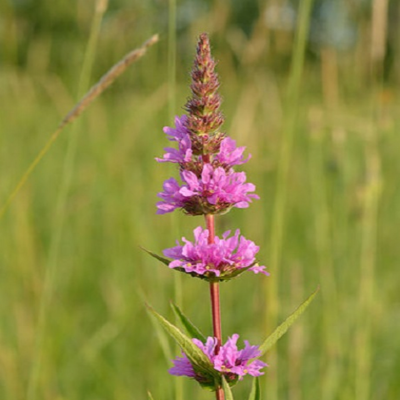

Plants for Pollinators highlights plants selected by the RHS as scientifically proven to tackle the declines in bees, butterflies and other pollinators.
A robust marsh flower which produces tall plumes of magenta blooms. Perfect for the pondside- let them loose and enjoy these sensational spikes of colour as they bring in bees!
- Type: Perennial
- Height: 60-120cm.
- Flowers: June-September
- Soil Requirement: Moist
- Light Requirement: Full sun or partial shade
- Natural Habitat: Marshes, riverbanks, fens
- Also known as: Black Blood, Rainbow Weed, Red Sally
This item is currently unavailable
The county flower of Roxburghshire is certainly well-named, as its toothy, cerise pink flowers with deep-rose central markings are among our most vivid, and carry all the allure of a fairytale maiden. Recommended for rockeries, this bloom's beauty is easy to get lost in, growing in clusters in a mat of dark silver-green foliage.
- Type: Perennial
- Height: 10-15cm.
- Flowers: May-August
- Soil requirement: Well-drained
- Light requirement: Full sun
- Natural habitat: Hillsides, pastures, dry banks
- Also known as: Lady's Cushion, Meadow Pink, Spink
This item is currently unavailable
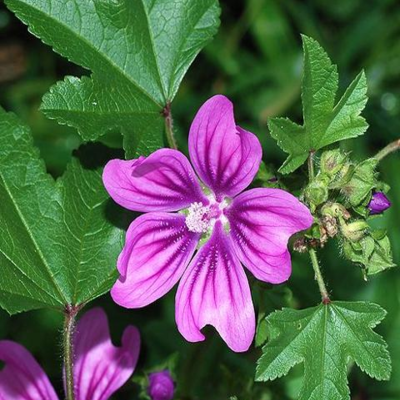

Plants for Pollinators highlights plants selected by the RHS as scientifically proven to tackle the declines in bees, butterflies and other pollinators.
There's many a reason to plant the tough, adaptable and hearty bloom that is mallow: cherish it for its heart-winning, heart-shaped pink petals veined with violet, or for its numerous medicinal and culinary uses; it's a flower that promises to please in many different environments.
- Type: Annual or Biennial
- Height: 30-90cm.
- Flowers: June-September
- Soil Requirement: Moist but well-drained
- Light Requirement: Full sun
- Natural Habitat: Meadows, road verges
- Also known as: Cheese Cakes, Marsh Mallow, Round Dock

Plants for Pollinators highlights plants selected by the RHS as scientifically proven to tackle the declines in bees, butterflies and other pollinators.
The Musk Mallow- so named for its musky, strong scent which only gets stronger in the summer warmth- produces pastel pink, heart-shaped petals; no wonder mythology treats it as a flower of love! Beloved by bees, and its precious blooms are an extra-sweet sight in the garden.
- Type: Perennial
- Height: 30-90cm.
- Flowers: July-September
- Soil Requirement: Well-drained
- Light Requirement: Full sun
- Natural Habitat: Hedgerows, meadows
- Also known as: Abelmosk, Ambrette
Choosing different wildflower plants by species gives you complete control over when you plant them, where you plant them and what the end result will be. And buying wildflower plug plants instead of seeds, means that you don't have to wait for them to germinate - perfect if speed is of the essence!
The full range of over 100 British wildflower plants species from Boston Seeds is available to buy online in trays of 25, 150 and 500 plug plants and all are available with nationwide delivery.
Want to learn more about the likes and dislikes of your favourite wildflower plants? Our handy wildflower species quide will tell you all you need to know - yours to download and keep for FREE.
Buy With Confidence

